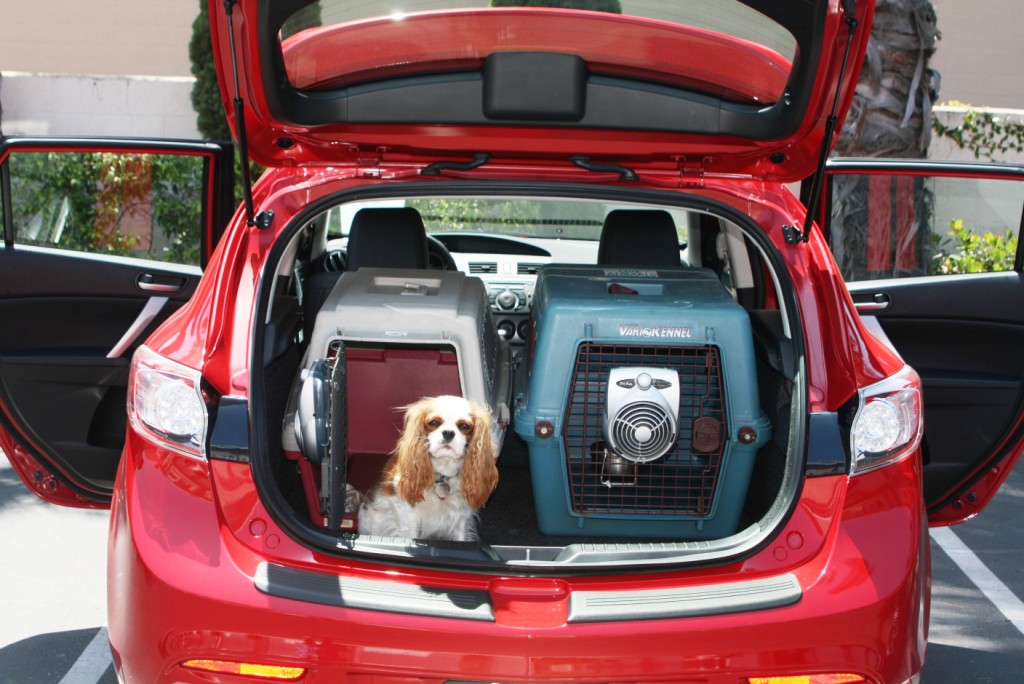If your dog is terrified of riding in the car, it doesn’t have to be that way. With careful planning and patient training, you can teach him to relax and enjoy the ride. Here are my favorite tactics for building canine confidence in the car.
Riding in the car. Isn’t that something that all dogs love to do? Not necessarily. While many dogs wag their tails wildly at the thought of a car ride, others pant, pace, or even throw up or have diarrhea. They may suffer from carsickness, or they may just not enjoy car rides because they associate them with undesirable results—such as a trip to the veterinary clinic or groomer.
Driving with a fearful dog makes road trips — of any length — miserable for both pet and person. For dogs, the fear, anxiety, and stress of riding in the car can escalate over time. And leaving car-averse dogs at home isn’t an option: dogs have places to go and things to do that are both fun (going to the park) and functional (that vet visit).
Teach Your Dog To Love The Car
Many dogs become anxious even before the engine starts, so break down the car ride step by step. Start slowly and wait until he’s comfortable with each step before moving on to the next.
First, either have your dog get in the car on his own or place your dog in the car if he cannot navigate getting in on his own, in the area where he would normally ride, whether that’s his crate or carrier or the backseat with a safety harness. Give him a tasty treat and then let him out immediately.
Once he’s comfortable getting in the car, start the engine while your dog is near the car but not inside it. Reward him with a treat or favorite toy, and then turn the engine off.
Next, have your dog get into the car and start the engine, but don’t move out of park; while your dog is in the car, give him a reward. When your dog is comfortable in the car, back out of the garage, then pull back in. If your dog remains calm with this short drive, try a trip around the block. Pair each trip with a reward to alleviate your dog’s anxiety and create a positive association with the car. If your dog suffers from motion sickness in the car, try rewarding him with praise or a favorite toy instead of treats.
Create A Safe, Comfortable Resting Area
A crate helps to protect your dog in an accident and minimizes driver distractions. A crate can also be a dog’s refuge after you arrive at an unfamiliar place.
To ensure that your dog rides comfortably, place the crate in such a way that it will sit on as flat a surface as possible. The angle of the car seat can make a crate tilt backward, so if you don’t have a flat cargo area where the crate can sit, consider purchasing a car leveler. You can also create your own by placing rolled towels under a crate. Some dogs ride more calmly with a cover over the crate to block their view, while others prefer to watch the passing scene.
Make Car Rides Rewarding
For many dogs, the fear of car trips is really a fear of the destination — they often end some place the dog doesn’t want to be, such as the groomer or the veterinary clinic. To alleviate your dog’s concerns, make sure that most car rides take him somewhere fun or at least neutral. Go to a nearby lake, beach or park, take a hike, make a stop at the drive-through bank teller or your fave fast-food spot (maybe he gets a French fry or two to sweeten the deal), or sign up for a weekly nose work, trick training or agility class.
Trigger And Treat?
Some dogs are fearful of certain sights and sounds when they’re in the car. My parents’ dog, Quixote, is terrified of rumble strips. To counter your dog’s fear, have a passenger offer a reward every time you encounter the thing that frightens your dog. Soon he’ll associate it with good things.
Calming Strategies
You can take other steps to help your dog relax before a car ride, especially if a road trip is in the works:
Walk away worries. Exercise decreases stress and increases feel-good hormones. Take your dog for a 10- to 20-minute walk just before you load up and hit the road.
Spray or wipe down your dog’s carrier with a canine pheromone product, which mimics the chemical signals a mother dog releases when nursing puppies. You can also get a diffuser for your car; you won’t notice the effects, but your dog will.
Play calming music. Dogs respond well to soft rock, reggae and classical music. I like “Through a Dog’s Ear: Driving Edition,” designed to keep you alert while calming your dog.
If your dog suffers from motion sickness, ask your veterinarian about medication that can help keep the tummy calm.
This article was reviewed/edited by board-certified veterinary behaviorist Dr. Kenneth Martin and/or veterinary technician specialist in behavior Debbie Martin, LVT.








